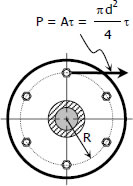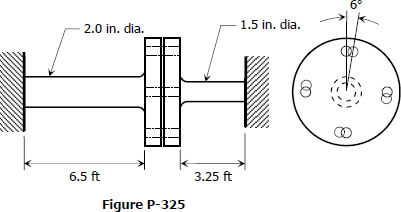Solution to Problem 329 | Flanged bolt couplings
Problem 329
A torque of 700 lb-ft is to be carried by a flanged bolt coupling that consists of eight ½-in.-diameter steel bolts on a circle of diameter 12 in. and six ½-in.-diameter steel bolts on a circle of diameter 9 in. Determine the shearing stress in the bolts.
- Read more about Solution to Problem 329 | Flanged bolt couplings
- Log in or register to post comments




